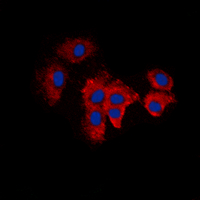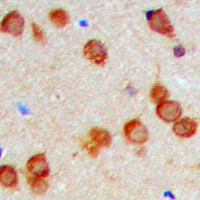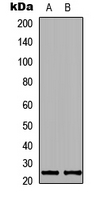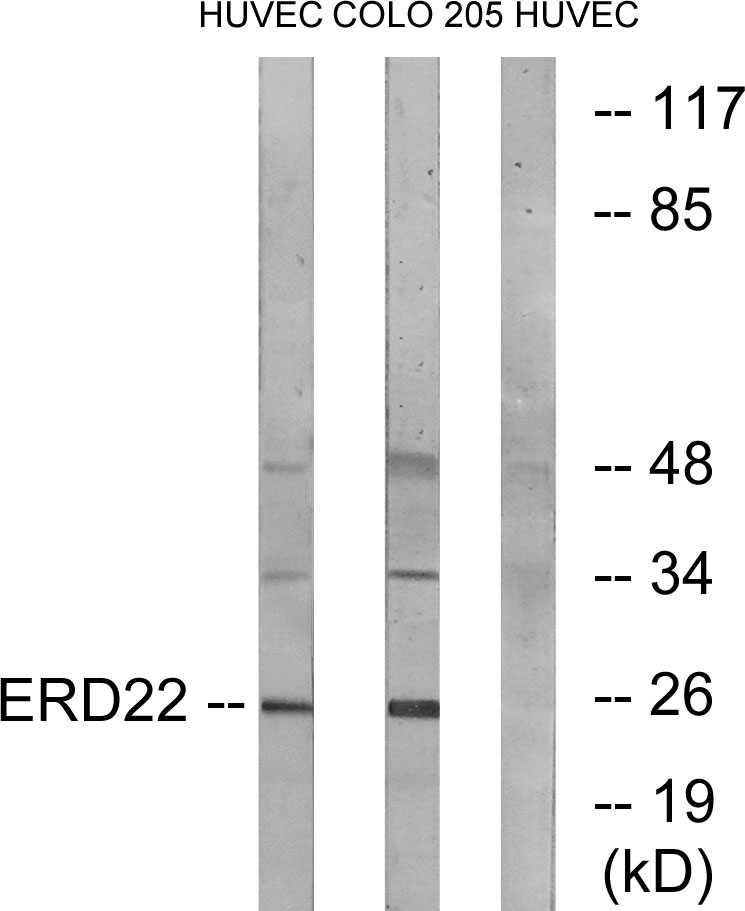
ICC/IF analysis of formalin-fixed A549 cells using GTX55288 KDELR2 antibody. Red : Primary antibody Blue : DAPI Permeabilization : 0.1% Triton X-100 in TBS for 5-10 minutes
KDELR2 antibody
GTX55288
ApplicationsImmunoFluorescence, Western Blot, ImmunoCytoChemistry, ImmunoHistoChemistry, ImmunoHistoChemistry Paraffin
Product group Antibodies
TargetKDELR2
Overview
- SupplierGeneTex
- Product NameKDELR2 antibody
- Delivery Days Customer9
- Application Supplier NoteWB: 1:500 - 1:1000. ICC/IF: 1:100 - 1:500. IHC-P: 1:100 - 1:200. *Optimal dilutions/concentrations should be determined by the researcher.Not tested in other applications.
- ApplicationsImmunoFluorescence, Western Blot, ImmunoCytoChemistry, ImmunoHistoChemistry, ImmunoHistoChemistry Paraffin
- CertificationResearch Use Only
- ClonalityPolyclonal
- ConjugateUnconjugated
- Gene ID11014
- Target nameKDELR2
- Target descriptionKDEL endoplasmic reticulum protein retention receptor 2
- Target synonymsELP-1, ELP1, ERD2.2, OI21, ER lumen protein-retaining receptor 2, (Lys-Asp-Glu-Leu) endoplasmic reticulum protein retention receptor 2, ERD-2-like protein, ERD2-like protein 1, KDEL (Lys-Asp-Glu-Leu) endoplasmic reticulum protein retention receptor 2, KDEL receptor 2
- HostRabbit
- IsotypeIgG
- Protein IDP33947
- Protein NameER lumen protein-retaining receptor 2
- Scientific DescriptionRetention of resident soluble proteins in the lumen of the endoplasmic reticulum (ER) is achieved in both yeast and animal cells by their continual retrieval from the cis-Golgi, or a pre-Golgi compartment. Sorting of these proteins is dependent on a C-terminal tetrapeptide signal, usually lys-asp-glu-leu (KDEL) in animal cells, and his-asp-glu-leu (HDEL) in S. cerevisiae. This process is mediated by a receptor that recognizes, and binds the tetrapeptide-containing protein, and returns it to the ER. In yeast, the sorting receptor encoded by a single gene, ERD2, is a seven-transmembrane protein. Unlike yeast, several human homologs of the ERD2 gene, constituting the KDEL receptor gene family, have been described. KDELR2 was the second member of the family to be identified, and it encodes a protein which is 83% identical to the KDELR1 gene product. Alternative splicing results in multiple transcript variants encoding distinct isoforms. [provided by RefSeq, Jul 2008]
- Storage Instruction-20°C or -80°C,2°C to 8°C
- UNSPSC12352203







